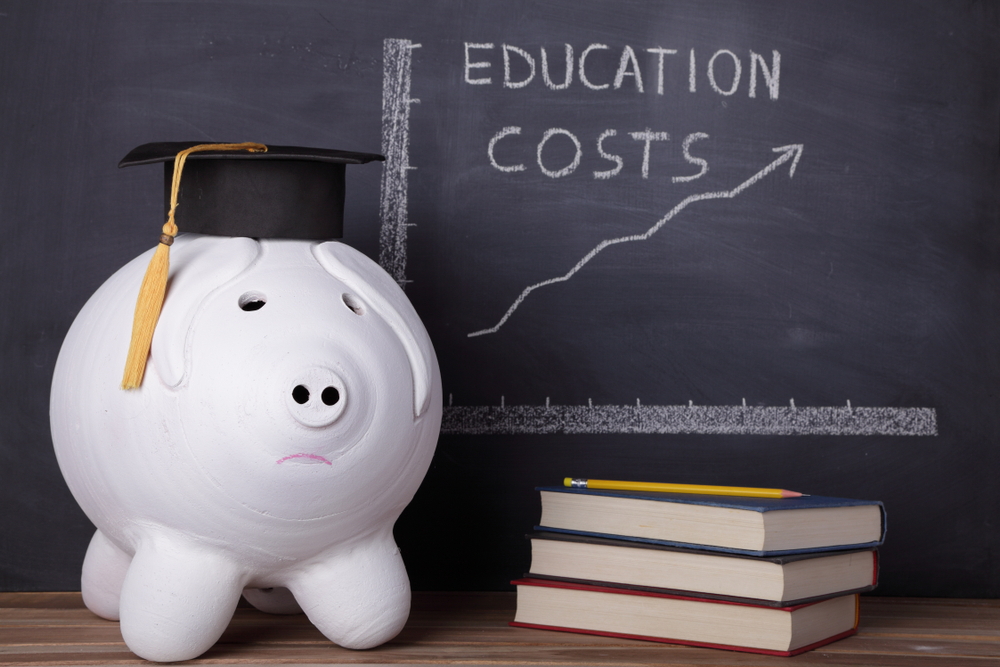Student loan debt in our country has reached horrifying levels with no end in sight! There are more than 44 million borrowers who collectively owe approximately 1.5 trillion dollars with another 100 billion about to be added to tin the coming months as people graduate. Student debt is the second largest form of consumer debt in the United States, second only to mortgage debt. The average college graduate owes approximately $40,000 in student loans upon graduation.
How did we get into this situation and better yet, how are we going to get out of it? It seems clear that the student loan crisis didn’t happen because of one trend or change and that it’s going to take a multi faceted approach to bring student debt into balance. Let’s look at what some of the contributing factors are:
- Rising college tuition: Costs for secondary tuition have jumped dramatically and those jumps include tuition at 2-year public colleges, 4-year public colleges, and 4-year private colleges. It costs $930 more per year to attend a 2-year college in 2018 than it did in 2008, $2670 more per year to attend a 4-year public college, and $7,390 more year to attend a private 4-year college (difference given in 2018 dollars). The average rate at which tuition has increased ranges from 1.2 times that of general inflation to 2.1 times the general inflation rate – effectively doubling the cost of tuition every 8 years.
- Rising number of people attending college: Enrollment in 2-year, 4-year, and post graduate programs has increased more than 50% since 1995. This increase is attributed, in part, to employers requiring college degrees to even be considered for most positions.
- Government education subsidies not keeping pace: State and federal education subsidies,whether directly to the institution or to students in the form of Pell grants, have increased massively over the years but not in proportion to the rise in the number of students. This translates to lower direct and indirect support per student for post-secondary education.
- Ballooning administrative costs: Administrative positions at colleges and universities increased 60% between 1993 and 2009 according to Bloomberg, 10 times the growth in tenured faculty positions
- Pricey, upgraded campus amenities: Colleges keep upgrading housing, dining, technology, entertainment and fitness options to be competitive when it comes to attracting the most desirable kind of students: those with high GPAs and low need for financial aid. Costs spent per student by colleges are often viewed as attractive or used in comparative college rankings, rewarding institutions who outspend their competitors with increased student demand to attend.
- Stagnating wages: Wages have not kept pace with inflation and certainly haven’t kept pace with rising college costs. Adjusted for inflation, the average American earns less today than they did in 1988. It’s become virtually impossible for even highly motivated students to be able to pay for college by themselves by working part-time. Stagnating wages also negatively affect graduates’ ability to pay off student loans after graduation.
The lure of a college degree as validation for student debt can be especially deadly for those who never graduate. 60% of students who start at a 4-year college graduate within the next six years. That leaves 40% without the college degree usually required to get better jobs but still likely burdened by student debt. It shouldn’t be too shocking to learn, then, that it’s borrowers with lower levels of student debt who are much more likely to default on their loans. 32% of borrowers with $5,000 or less in student debt defaulted on their loans within a four year period according to a report from The Urban Institute.
There are very real costs to society when young people are burdened by such high levels of debt. A 2017 Federal Reserve study found a correlation between higher student debt and lower rates of home ownership. Deferring marriage, waiting to have children, deciding against graduate school or not taking a lower paying public service job were additional real consequences of student debt, the study found.
College remains a good investment provided that those incurring debt are able to graduate and get their degree because of the value conferred by having a degree. College graduates can expect to make 84% more than a high school graduate, according to a 2011 Georgetown study. That degree value is lower for women and non-whites as well as for degrees such as those in fine arts or less marketable specialties.
It’s likely that overall, the student debt situation will become worse before it becomes better. We might need to get to a real crisis level of default, debt, and inability to fill jobs before politicians find the urgency and motivation to address how we finance college educations and how we manage student debt. We know, as a country, that we’re not producing highly skilled workers at a pace to replace soon to retire professionals. Meanwhile student debt continues to accrue at vast and terrifying pace.





